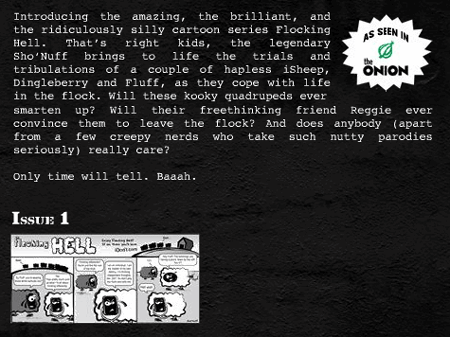A few days ago my wife and I were in a restaurant, commiserating with a friend about her difficulties as a film fan on a mission. She told us she has been taking in as many of the films of Woody Allen as she can rent. It hasn’t been easy. She has been forced to rely on the shrinking inventory of the neighborhood video store, Video Adventures. Not surprisingly, the store just announced it will be going out of business next month.
Alas, our friend has a lot of Woody Allen yet to cover. My wife and I almost simultaneously blurted out the obvious solution: Netflix.
Netflix has an extensive film selection, excellent search capabilities and the brilliant ability to build and share your film wish lists. It’s the perfect tool for a film completist such as our friend.
Allowing customers to rent videos from home, without the threat of late fees, is an obvious point in the favor of Netflix over the brick-and-mortar video store business model. But the other major reason Netflix has become such a marketing force, and a threat to the video store, is its ability to exploit the long tail phenomenon.
If the term long tail is new to you, I recommend you read Wired editor Chris Anderson’s article, if only to learn the origin of the name (here’s a hint: think of the slim, wedge-shaped outer region of a graphic showing gross sales numbers along the vertical axis and the amount of variety of titles along the horizontal).
The significance for marketers of the long tail is described well by Anderson below:
[The emergence of] unlimited selection is revealing truths about what consumers want and how they want to get it in service after service … People are going deep into the catalog, down the long, long list of available titles, far past what’s available at Blockbuster Video, Tower Records, and Barnes & Noble. And the more they find, the more they like. As they wander further from the beaten path, they discover their taste is not as mainstream as they thought (or as they had been led to believe by marketing, a lack of alternatives, and a hit-driven culture).
When I first read that article I was skeptical. After all, Hollywood has done a great job of dictating to the masses what they should be viewing. And true “video adventurers” like our friend are rare.
Are we truly willing to take a chance? When given the opportunity to scratch an itch for more movies like those that we’ve enjoyed, even if they are obscure and heretofore unknown, is the typical consumer really going to risk disappointment?
Now I have my answer.
In his latest column, New York Times technology writer David Leonhardt explains that Netflix stocks approximately “60,000 movies, television shows and how-to videos that are available on DVD (and that aren’t pornography).” He continues below:
Just as important … Netflix lets users rate movies on a one- to five-star scale and make online recommendations to their friends.
The company’s servers also sift through the one billion ratings in its system to tell you which movies that you might like, based on which ones you have already liked. [Something described in a blog entry last month.]
The result is a vast movie meritocracy that gives a film a second or third life simply because — get this — it’s good. [Here’s a]Â brainteaser I have been giving my friends since I visited Netflix in Silicon Valley last month. Out of the 60,000 titles in Netflix’s inventory, I ask, how many do you think are rented at least once on a typical day?
The most common answers have been around 1,000, which sounds reasonable enough. Americans tend to flock to the same small group of movies, just as they flock to the same candy bars and cars, right?
Well, the actual answer is 35,000 to 40,000. That’s right: every day, almost two of every three movies ever put onto DVD are rented by a Netflix customer.
I’ve personally experienced the long tail in music. My musical diet is more varied today than it has ever been, all thanks to access to a nearly unlimited variety of musical genres and artists in digital format. It’s exciting to read that the same exploration is taking place by consumers in the film industry, with the same predictable disruptive effects.
Although I hate to see neighborhood businesses fold, with the resulting ripple effect on local economies, in this case that is outweighed by the fact that I’m a fan of many of those films found in the outer reaches of the long tail (and not found in any video store).
So I find this latest news comforting. Less so, the news that our friend actually enjoyed Woody Allen’s Celebrity.
